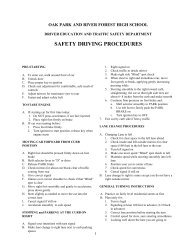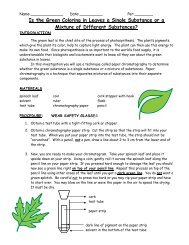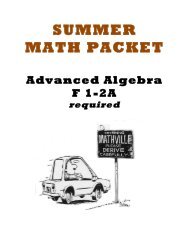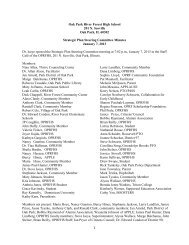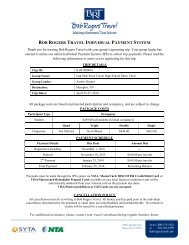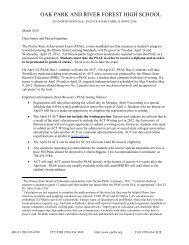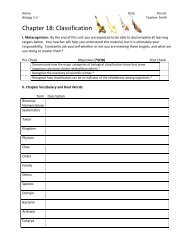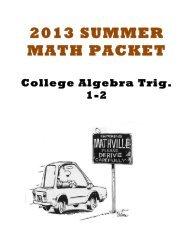PRECALCULUS 1A
PRECALCULUS 1A
PRECALCULUS 1A
You also want an ePaper? Increase the reach of your titles
YUMPU automatically turns print PDFs into web optimized ePapers that Google loves.
Academic<br />
Integrity:<br />
Classroom<br />
Rules:<br />
Working together on HW and projects where appropriate is strongly encouraged. However, copying<br />
other people’s work is prohibited. If you copy from another student or any other source (or allow a<br />
student to copy your work), you will receive a zero for the assignment and will not be permitted to<br />
redo the assignment. If you are quoting or paraphrasing from an outside source for a project or<br />
paper, be sure to cite the source appropriately.<br />
Cell phone use during any assessment results in an automatic zero on that assessment. You will be<br />
asked to take out, turn off, and place your cell phone on your desk during any assessment. You<br />
cannot use your cell phone as a calculator during class as your TI-84 serves this purpose.<br />
TOPICS COVERED IN CALCULUS CONCEPTS 1-2A<br />
SEMESTER ONE<br />
I. Functions in Calculus<br />
A. Functions, Calculus Style<br />
B. Transformation of Graphs<br />
C. Calculator Graphs<br />
D. What is a function?<br />
E. Composite and Inverse Functions<br />
F. Attributes of Even and Odd Functions<br />
G. Modeling with elementary functions<br />
II.<br />
More on functions<br />
A. Functions and change<br />
B. Exponential functions<br />
C. Piecewise Functions<br />
D. Logarithmic functions<br />
E. Trigonometric functions<br />
F. Powers<br />
G. Polynomials and End Behavior<br />
H. Rational Functions and Asymptotes<br />
III. Limits<br />
A. Introduction to continuity<br />
B. Graphical limits<br />
C. Numerical limits<br />
D. Analytical limits<br />
IV. The Slope Function<br />
A. How do we measure speed?<br />
B. Instantaneous Velocity<br />
C. How do we calculate distance?<br />
D. Riemann Sums<br />
E. Local Linearity<br />
SEMESTER TWO<br />
V. Short-cuts to differentiation<br />
A. Powers and polynomials<br />
B. The exponential function<br />
C. The product and quotient rule<br />
D. The chain rule<br />
E. The trigonometric functions<br />
F. The chain rule and inverse functions<br />
G. Implicit functions<br />
H. Linear approximation and the derivative<br />
VI. Using the derivative<br />
A. Using first and second derivatives<br />
B. Families of curves<br />
C. Optimization<br />
D. Applications to marginality<br />
E. Optimization and modeling<br />
F. Rates and related rates<br />
G. Differentiability<br />
VII. The definite integral<br />
A. Area between curves<br />
B. The definite integral<br />
C. The fundamental theorem and interpretations<br />
D. More on definite integrals<br />
VIII.Constructing Antiderivatives<br />
A. Antiderivatives graphically and numerically<br />
B. Constructing antiderivatives analytically<br />
C. Differential equations<br />
D. Second fundamental theorem of calculus<br />
E. Integration by substitution



